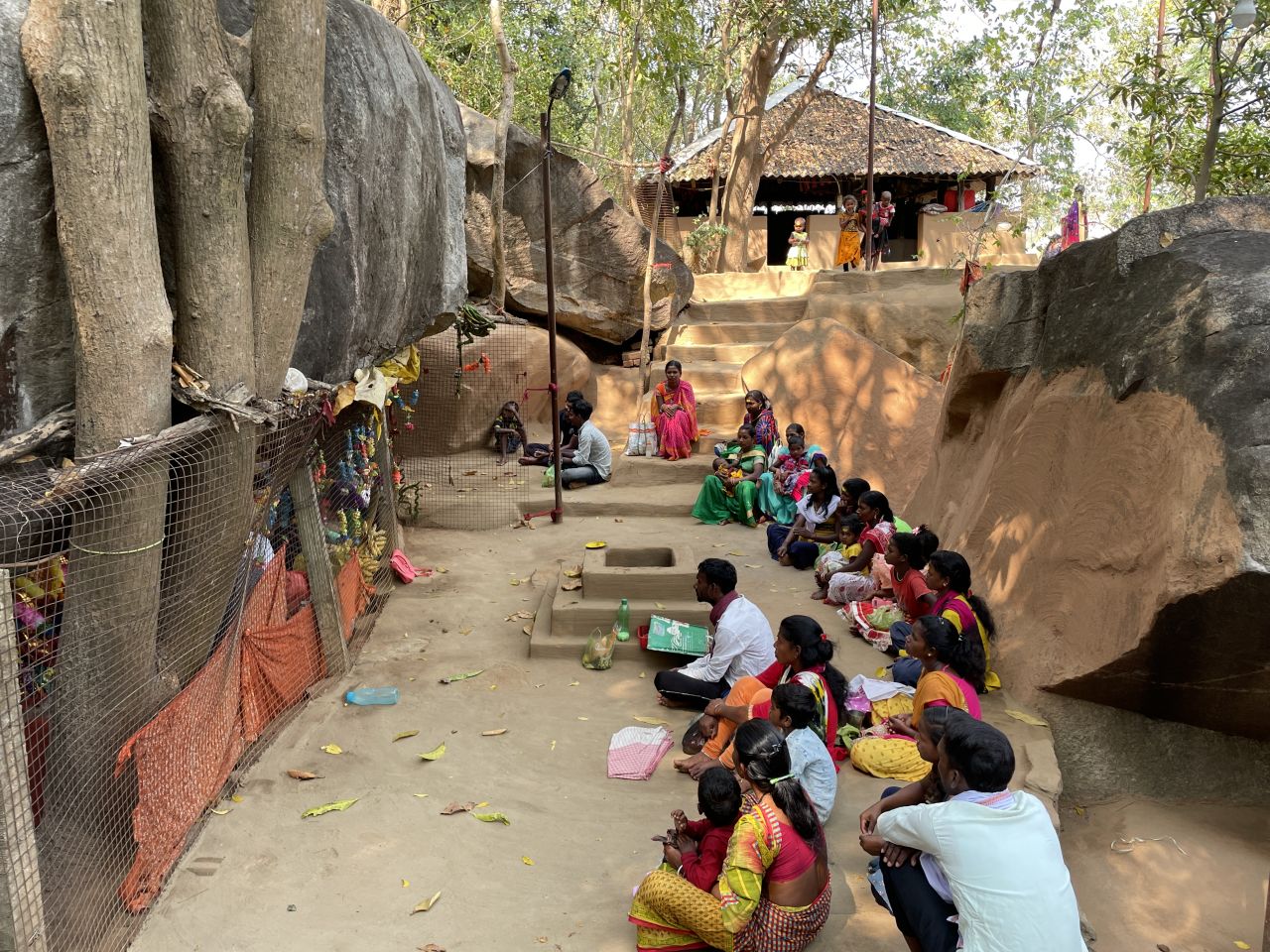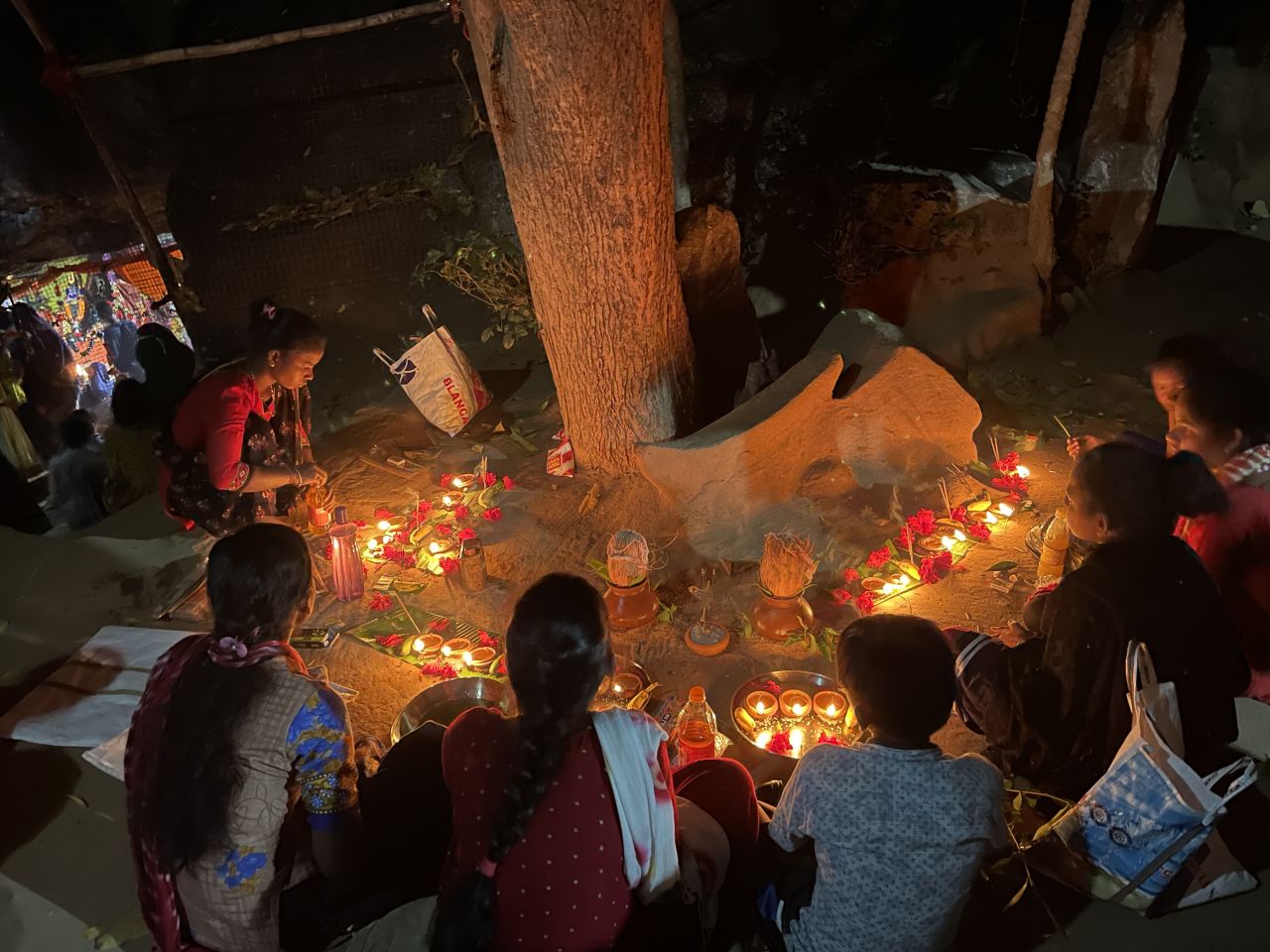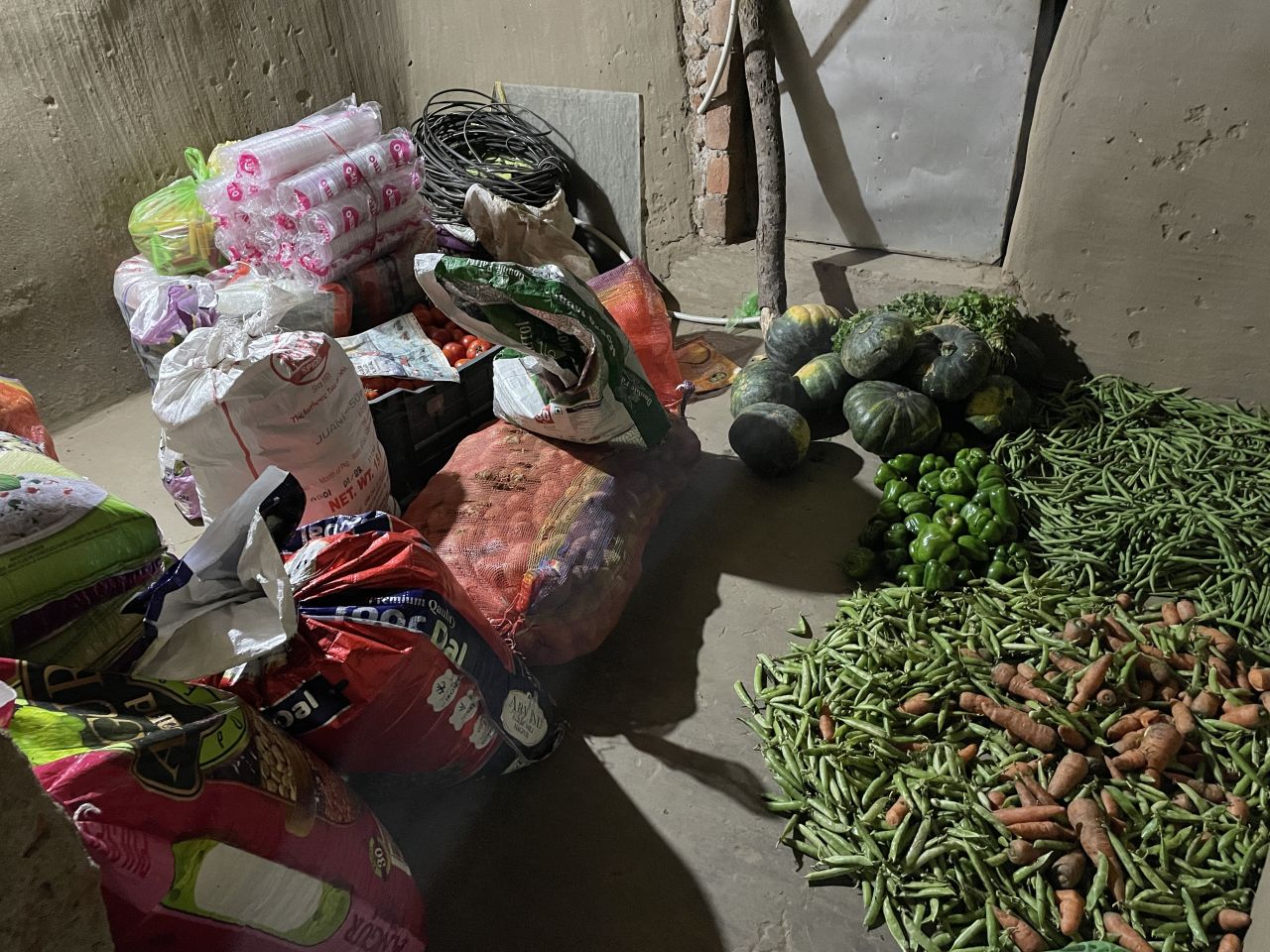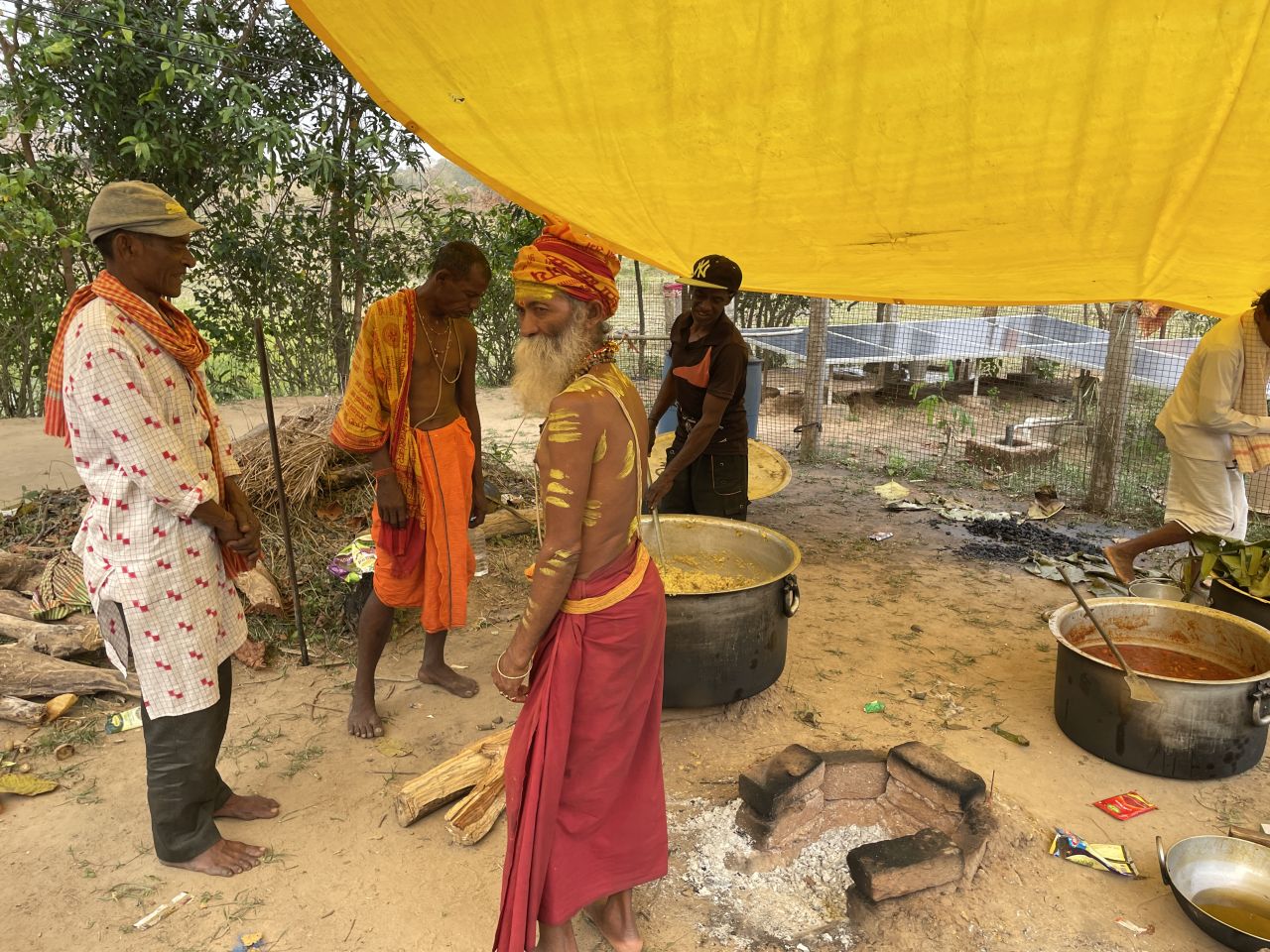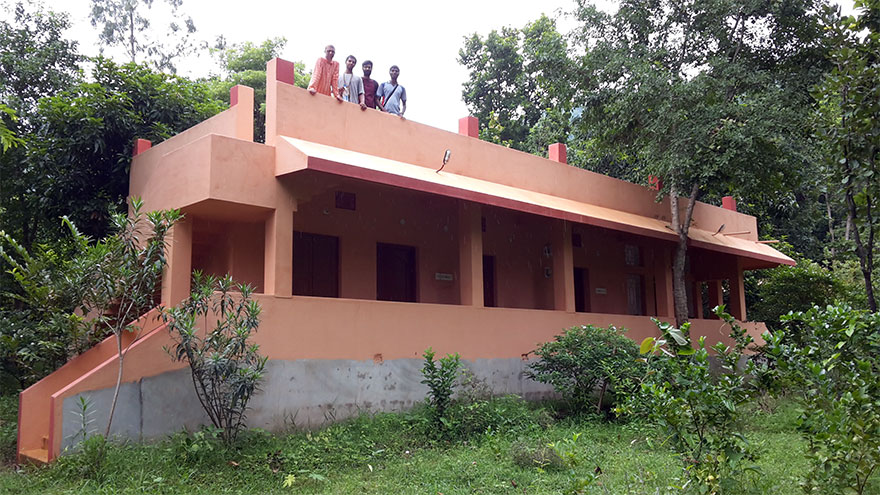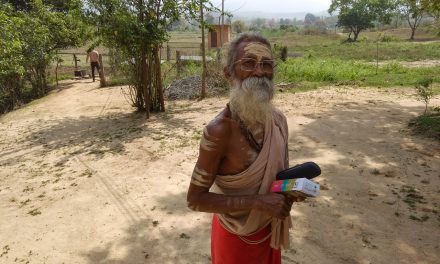This year Shivaratri fell on March 1st, and as mentioned in a previous post we wanted to help Dayalu Baba with the festival by arranging for the feeding of all the visitors and devotees throughout the day and night.
From the morning, visitors came to worship Lord Shiva, and many came and stayed throughout the night, as the main worship on this day occurs in the night. In Odisha Shivaratri is also called as Jagara, which means “staying awake”, as one is supposed to fast that day and stay up all night worshipping Lord Shiva.
The culmination of the worship is the raising of the “mahadeepa” lamp to the top of the Shiva temple. It is considered very auspicious to see the crescent moon in the early morning after worshipping Lord Shiva, as he keeps the crescent moon as a decoration on his head.
Photo: Dayalu Baba woshipping the shivalingas inside the ashram’s cave temple in the night.
Throughout the day and night devotees sung Hare Krishna kirtan. Some may wonder why on Shivaratri the names of Lord Krishna are sung. In Odisha there is a custom that on any sacred occasion there will be nonstop 24 hour kirtan of the Hare Krishna mahamantra. This is likely due to the influence of Sri Chaitanya Mahaprabhu 500 years ago in Puri, who spread the chanting of the Hare Krishna mahamantra throughout Odisha. The chanting of this mantra is locally called simply as “nama”, which means “the name”. Every religious function becomes complete with nama sankirtana, the divine purifying name of God.
Visiting devotees also lit their personal lamps for Lord Shiva, and sat performing worship throughout the night with bilva leaves and chanting of Lord Shiva’s panchakshari mantra, “om namah shivaya”. At the culmination of the worship all of their deepams were raised on top of the temple along with the mahadeepam.
Photo: Dayalu Baba climbing a tree to collect bilva leaves to offer to Lord Shiva on shivaratri. I am always surprised by how easily he climbs trees or cliffs. I turned away for a second, and when I turned back I saw him on top of the tree picking bilva leaves.
Photo: Dayalu Baba collects milk from one of his cows to use in the abhisheka of Lord Shiva in the night. Below you can see his cows enjoying in a pile of straw on the day of Shivaratri. He currently takes care of seven cows.
Photo: Some of the local village children also enjoyed playing in the piles of straw left over from the rice harvest.
As we mentioned last time, we wanted to help Baba by arranging the feeding for all the visitors and devotees. We purchased the groceries and arrived the night before to set up the cooking arrangements.
The cooking started early in the morning, and distribution of the cooked prasadam went on throughout the day up to the late night as devotees kept coming in batches.

